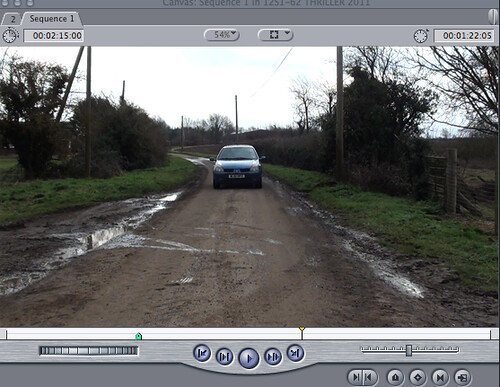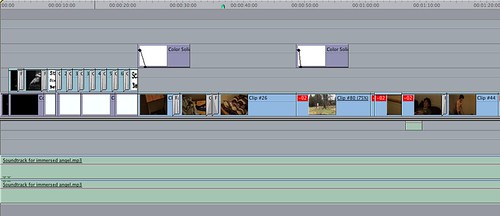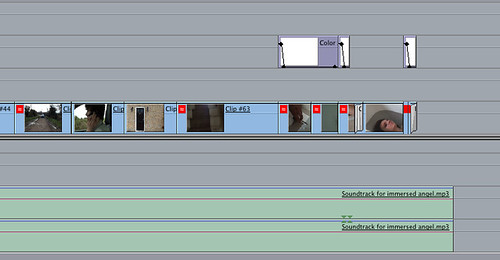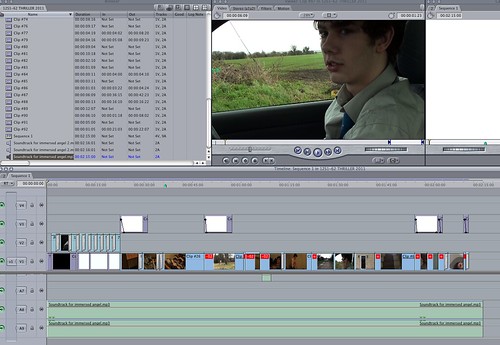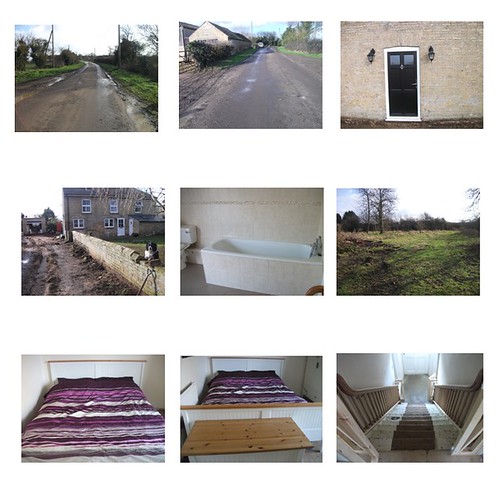On Friday 11th, Kelly and Beth collected the film camera and tripod from the media office at 4:10 after college and met Lauren at the ping-pong table as planned. Instead of getting the bus to Stretham and then a lift to Wicken, Lauren’s mate Scott who was one of the male detectives gave us a lift to Lauren’s house, which was much easier as it allowed us to get back earlier and start filming earlier. As we were travelling back to Lauren’s we realised that we had forgotten our storyboard, which we had planned to follow when filming. So to overcome this problem, we managed to get up our uploaded version on blogger and look at it from there as well as using our memory.
That evening we filmed most of the indoor scenes because by the time we got home it was too dark to film the outdoor scenes. These consisted of all of the male detectives scenes.
We started off filming shot 2, which was of the detective in the bed sleeping. However, we realised that Lauren’s bed sheets were a little girly for a male detective, so Lauren lay in the bed beside our detective, Scott to make it look more natural. This is also a typical convention in thrillers, as the non-professional detective always has his girlfriend/wife in his bed with him, which works perfectly. We had to film this shot many times, due to Lauren & Scott’s constant giggling and when we realised that we did not have the phone in the shot on the bedside (which would not create continuity) we had to re-film it again.
We then filmed shot 1, which was off all the detectives equipment, such as his penknife, which is a typical prop used in thrillers. This shot went to plan and we shot a few clips of it just in case one did not look so good when editing.
We did not need to film shot 3, due to zooming in on the detectives face when filming the bed scene, which replaced the close up. So we moved onto the shot of the extreme close up of the detective’s eyes opening. This was difficult to film, as we had to get the camera at a high angel, so we used the hand-held technique, which at the time we thought went well. Until it come to editing and we realised it was a bit dark.
The next shot filmed was shot 6, which is a close up of the detectives phone ringing. Beth rang Kelly’s phone so the audience could identify that his phone is ringing. This shot went perfectly fine and we managed to film a few clips of it so we could have a variety to choose from when editing.
Shot 7 was our next shot that we filmed, which was of the detective lying in bed on the phone. However, we could only film one detective talking, as our other planned detective could not come due to personal reasons. Therefore, to overcome this problem, we got our detective, Scott to pause before talking and then say ‘Hello, hello’. Then when it comes to editing our footage, we will put a voice over, where there is a gap between the detective Scott talking, which will be the other detective talking.
Our next shot that we filmed was shot 8, which was a mid shot of the detective getting changed into his work clothes. We got him to put on a shirt and tie around his neck scruffily, so the audience can identify that he is the non-professional detective, which is a typical convention in thrillers. This went to plan and looked really good in our opinion.
The last shot that we filmed that evening was a reaction shot of the detective, when seeing the dead body in the bath, which did not exactly go to plan as Scott found it difficult to act a surprised face, so we had to do with what we got.
